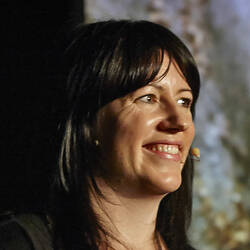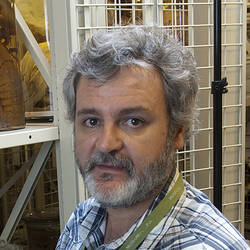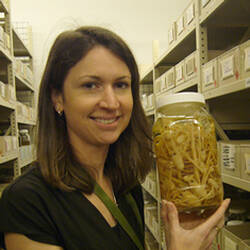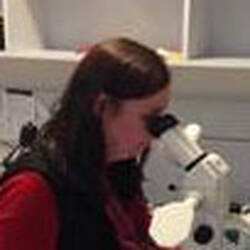Invertebrates
The Invertebrate Collection dates to the origin of Museums Victoria in the 1850s when acquisitions made by the founding director, Frederick McCoy, included marine invertebrates. Over its history, the collection has been developed through a combination of donations, exchanges, purchases, bequests and field-collecting expeditions.
The collection encompasses approximately 25 animal phyla. Key components include Mollusca, Echinodermata, Crustacea, Annelida, Bryozoa and Cnidaria from Australia and around the world. It holds over 5 million specimens in an estimated 1,064,000 specimen lots, including around 8,600 lots of type specimens. The collection covers at least 6600 described species but many more are as yet undescribed. Non-crustacean arthropods and non-molluscan terrestrial and freshwater invertebrates are held in the Entomology and Arachnology Collection.
The collection is composed of 'wet' specimens (mostly preserved in ethanol or formalin), 'dry' specimens (specimens with no soft tissue, as well as models and display preparations), 'micro slides' (specimen preparations mounted on slides for microscopic examination) and 'SEM' specimens (specimen preparations mounted on stubs for image-capture under a scanning electron microscope).
Significance
The Marine Invertebrate Collection has an extensive representation of the invertebrate fauna of south-eastern Australia and Antarctica and comparative material from the rest of Australia and around the world. The cephalopod mollusc component is of prime national and international importance and is the largest cephalopod collection in the southern hemisphere and one of the largest in the world. The echinoderm component includes nationally significant material from shallow waters of southern Australia and deep-sea regions around Australia and the Southern Ocean. The polychaete component is of national and international significance as it is the most extensive collection of polychaete worms from southern Australia. The crustacean component is an exceptionally diverse collection, with a significant representation of taxa from Australian estuarine, bay, coastal shelf, and deep-sea environments. The terrestrial molluscan collection is one of the largest collections of its kind in Australia and the largest representation of the Victorian fauna anywhere. The entire type collection is digitally registered and searchable online.
The collection also contains significant holdings of historical material and data which provides a valuable snapshot of the fauna at the time of collection. It is therefore of great value to researchers undertaking studies into ecological and climate change.







